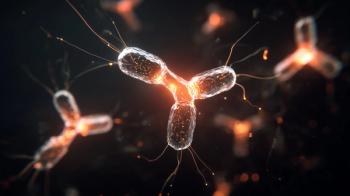
Gestational Diabetes Mellitus Could Increase Maternal Susceptibility to Group B Streptococcus
GBS can cause transcriptional adaptations, which may increase risk of poor neonate outcomes.
Clinical data suggest that gestational diabetes mellitus (GDM) can increase the risk of fetal infection and worse neonate outcomes caused by in utero group B Streptococcus (GBS) pathogen, according to the authors of a recent preclinical study published in Nature Communications. There are multiple reasons why GDM and GBS can each contribute to this risk, including altered vaginal microbial taxa, reduced immune response, and transcriptional regulation.
“These findings advance our current mechanistic viewpoint on host and GBS factors that drive GBS disease in pregnancies impacted by diabetes,” wrote study authors.
GBS, a bacterium that resides in the vagina, is one of largest causes of morbidity and mortality in neonates around the world, causing approximately 150,000 stillbirths and infant deaths.
Approximately 18% of pregnant women have GBS. The standard of care for GBS-positive mothers is antibiotic prophylaxis, although this is not effective at preventing preterm births or stillbirths. It also exposes neonates to antibiotics, which can increase antimicrobial resistance.
GDM may increase risk of perinatal GBS disease by 3-fold, according to some estimates. However, investigators do not fully understand all the factors and molecular mechanisms that may contribute to this increased risk. This study uses an animal model to better understand the pathology of GBS and function of GDM as a risk factor.
Investigators originally hypothesized that GDM would increase the risk and speed at which expecting mothers may contract GBS, along with increased outcomes severity, and they observed just that in the analysis. Maternal mice with GDM had a higher risk of GBS fetal infections and worse neonatal outcomes (including lower rate of survival or weight gain) compared to mice without GDM.
One of the possible explanations for these outcomes is that mothers had an increased presence of bacteria in utero. In the murine model, pregnant mice with GDM also had an altered immunityand vaginal microbiota, along with varied GBS transcriptional adaptations, which may contributeto risk of GBS disease.
Further, these transcriptional responses led to “the upregulation of host cell death, cytokine signaling, and inflammatory pathways in GDM vaginal, uterine and placental tissue, [which] altered GBS-host interactions and increased pathogenicity in GDM,” study authors wrote.
GDM also impacted maternal immunity, with investigators observing a reduction in uterine natural killer cell activation, impaired placenta, and altered maternofetal cytokines.
There are limitations to the study, according to the study authors. First, investigators may have missed baseline immune differences in GDM mice. In addition, they evaluated immune responses after 72 hours and could have missed acute differences.
Future studies can focus on the effects of fetal and neonatal immunity on perinatal outcomes, or the role of the neonatal microbiota, according to the study authors. GDM can promote bacterial dysbiosis that promotes infection from other dangerous strains, worsening neonate outcomes.
“This preclinical model captures biological variability in GBS interactions with the gravid host that may aid in risk-stratification of women with GDM and provides a critical platform for testing alternative treatment options to improve perinatal outcomes in gestational diabetic pregnancy,” study authors wrote.
REFERENCE
Mercado-Evans V, Mejia ME, Zulk JJ, et al. Gestational diabetes augments group B Streptococcus infection by disrupting maternal immunity and the vaginal microbiota. Nat Commun. 2024;15:1035. doi:10.1038/s41467-024-45336-6
Newsletter
Stay informed on drug updates, treatment guidelines, and pharmacy practice trends—subscribe to Pharmacy Times for weekly clinical insights.


















































































































































































































